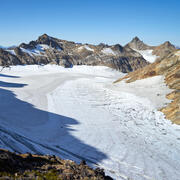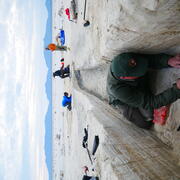Glaciers
Glaciers store water as ice, transport it from where it fell as precipitation, and release it to streams and rivers years to millennia later. The Ecosystems Land Change Science Program focuses on documenting changes in glacier mass balance (how much water contained), understanding magnitudes and drivers of change, and evaluating impacts on freshwater availability, sea-level rise, and communities.











